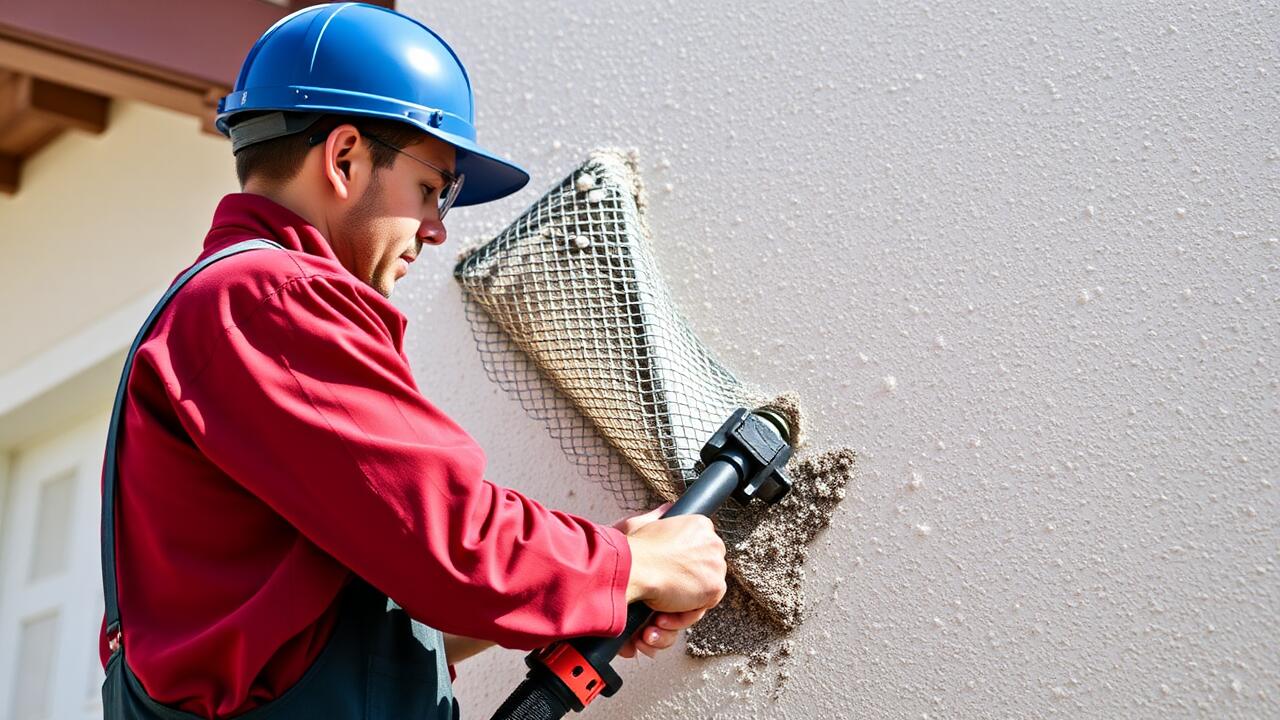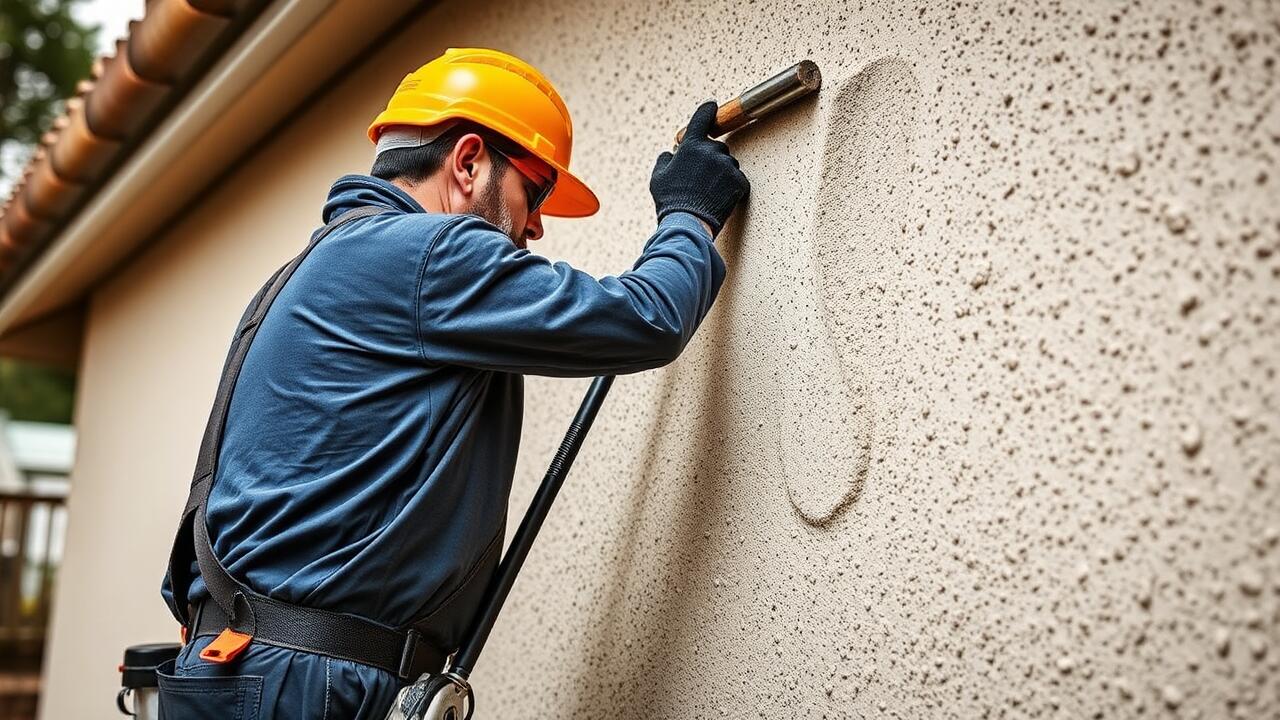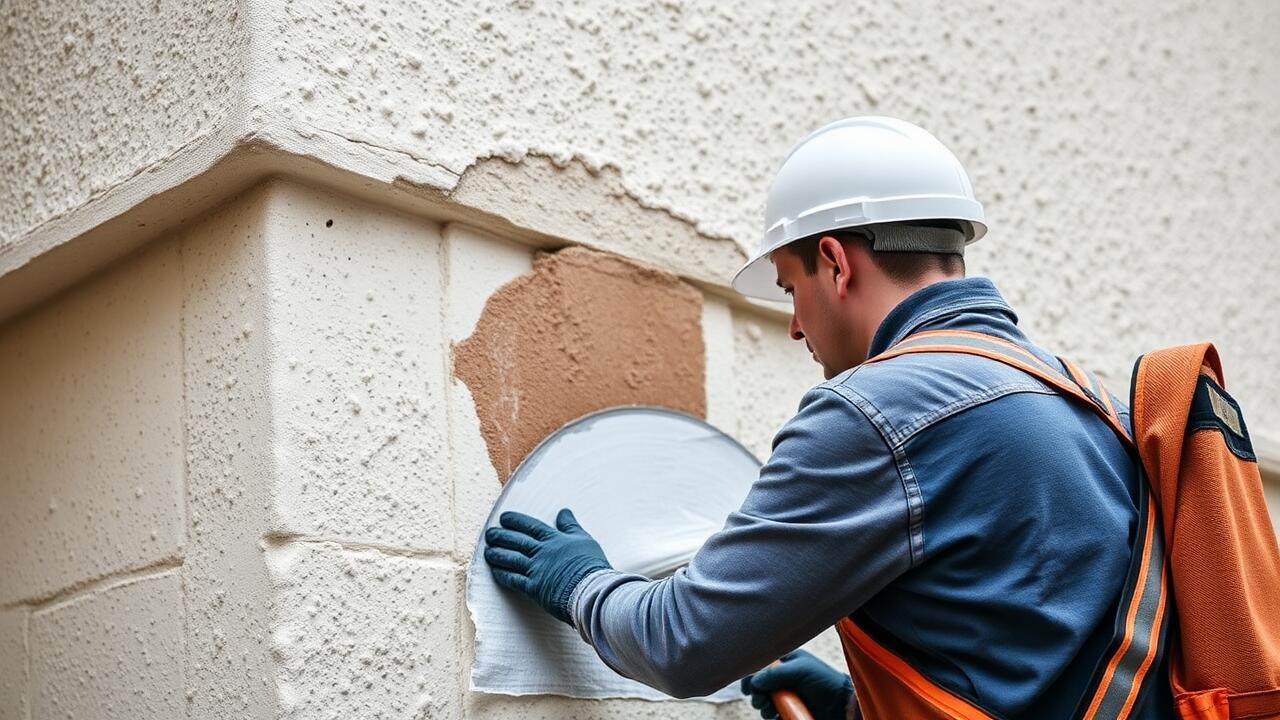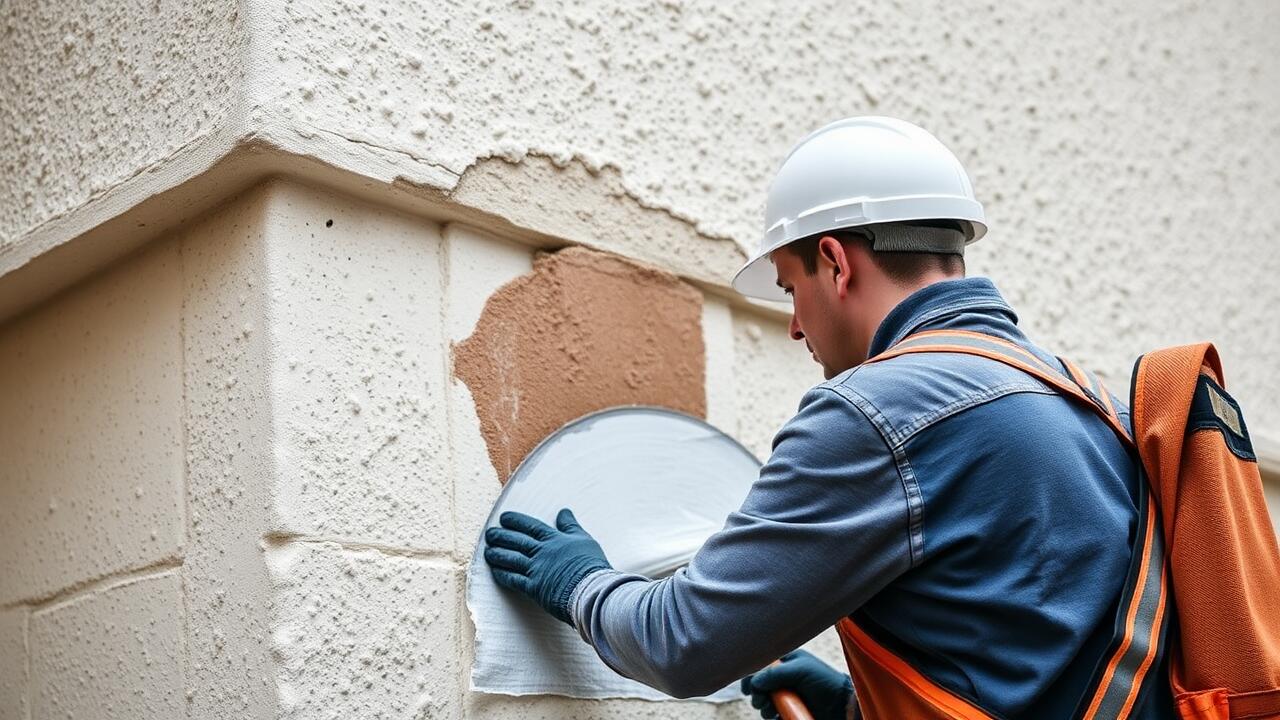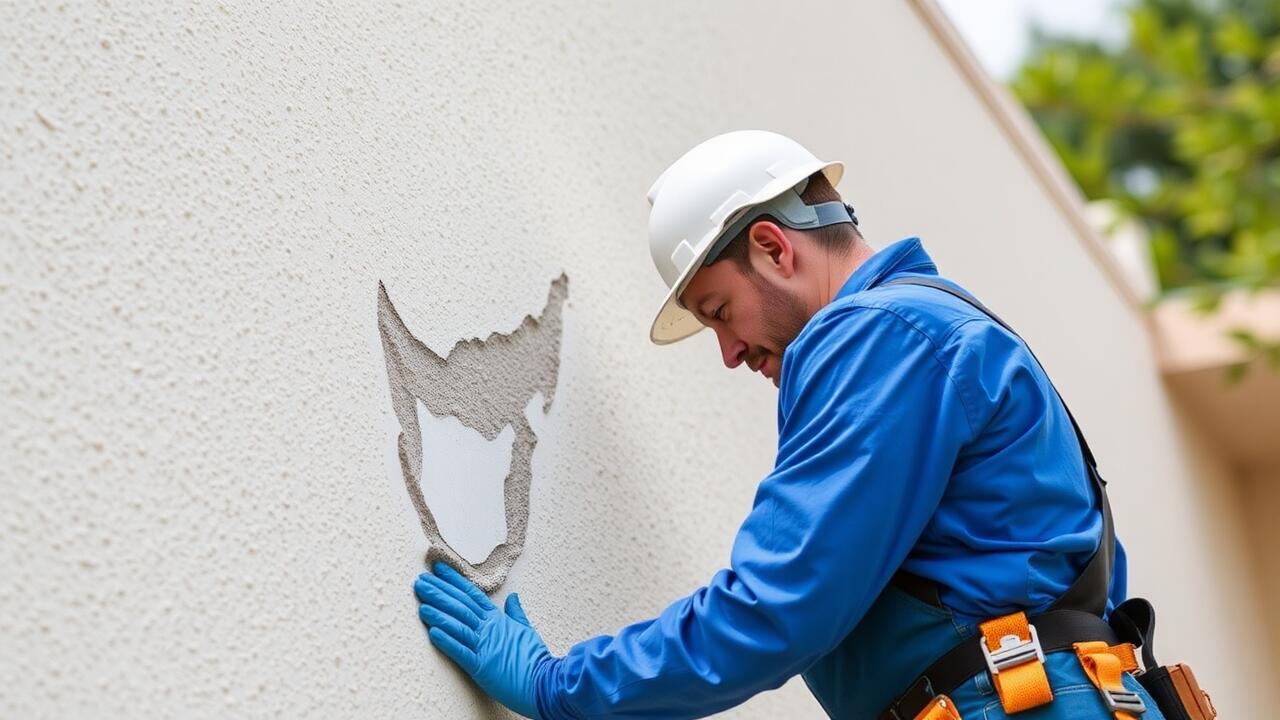
Exclusions in Homeowners Insurance Policies
Homeowners insurance policies often come with specific exclusions that can impact the coverage for stucco damage. Routine wear and tear is generally not covered, meaning that if cracks are simply a result of aging materials or lack of maintenance, homeowners may find themselves responsible for repairs. Insurers typically view these issues as part of home upkeep rather than damage caused by unforeseen events. It is crucial for homeowners to familiarize themselves with their policy's exclusions to avoid unexpected out-of-pocket expenses.
Natural disasters can also play a significant role in determining what is covered. For instance, damage from earthquakes or floods may not be included in standard homeowners insurance policies. In these cases, additional coverage or separate policies might be necessary. Homeowners in areas like Crenshaw, Los Angeles, should be especially aware of the risks specific to their region. Understanding the limitations of their homeowners insurance can help in making informed decisions about preventative measures and repairs through services like stucco repair.
Situations Where Coverage May Be Denied
Certain situations can lead to the denial of coverage for stucco damage under homeowners insurance policies. Most notably, wear and tear due to aging or lack of maintenance will typically not be covered. Insurers often classify cracks resulting from gradual deterioration as a homeowner's responsibility. Owners should be aware that neglecting routine maintenance can result in issues that may not be compensable under their policy.
Homeowner policies might also exclude coverage for damage caused by natural disasters unless specifically added to the policy. For instance, damage from earthquakes or floods may require separate coverage options. If cracks in stucco arise from these excluded events, a claim for repair will likely be denied. Homeowners in need of assistance with such issues should consider reaching out to local experts, such as those at Stucco Repair Crenshaw, Los Angeles, to evaluate the damage and discuss repair strategies.
Steps to Take if You Discover Cracks
Discovering cracks in your stucco can be concerning for homeowners. The first step is to assess the extent of the damage and determine whether it appears to be superficial or if it indicates more serious structural issues. It is crucial to document the cracks by taking clear photographs, making notes of their size and location, and observing any changes over time. This information will be invaluable if you decide to involve your homeowners insurance or seek professional help.
Once you have a clear understanding of the situation, consider reaching out to a contractor who specializes in stucco repair. For residents seeking assistance in this area, services like Stucco Repair Sherman Oaks, Los Angeles can offer expert evaluations. They can provide insights on necessary repairs and whether the damage aligns with concerns covered by your insurance policy. Taking prompt action will help you mitigate further damage and maintain the integrity of your home.
Assessing the Severity of the Damage
When assessing the severity of cracks in stucco, it is important to closely examine their size and location. Small hairline cracks may not indicate significant structural issues and could simply be a result of settling. However, larger cracks, particularly those wider than a quarter-inch or those that zigzag or form patterns across the surface, might suggest more pressing concerns. These may point to underlying problems with the foundation or water infiltration, which can lead to costly repairs.
In the Crenshaw area of Los Angeles, the local climate and potential for earthquakes can also influence the extent of damage to stucco. Homeowners should monitor changes over time, noting any widening cracks or signs of water damage, such as discoloration or peeling paint. If there are multiple cracks appearing in a short period or if you suspect long-term damage, consulting with a professional is advisable. Companies specializing in stucco repair can offer insights into the necessary steps for safeguarding your home’s structural integrity.
How to File a Claim for Stucco Damage
Filing a claim for stucco damage involves several key steps to ensure a smooth process. Begin by thoroughly documenting the damages. Take clear, detailed photographs of the cracks and any related issues. It's also prudent to keep a record of the dates when you first noticed the damage. This documentation will serve as essential evidence in your claim. If you’ve already received professional assessments or repair estimates, include these with your submission to strengthen your case.
Once you have gathered all relevant information, contact your insurance company to initiate the claims process. Be prepared to provide them with both your documentation and any necessary details about your homeowners policy. If you're unsure about the specifics of your coverage, consulting with a local professional, such as those from Stucco Repair Crenshaw, Los Angeles, may provide valuable insights. Clear communication with your insurer will help to expedite the handling of your claim.
Essential Documentation and Evidence
When filing a claim for stucco damage, gathering comprehensive documentation is essential. Start by taking clear photographs of the cracked stucco from various angles. These images should illustrate the extent of the damage and any related issues, such as water penetration. Include close-ups and wide shots to provide context. Additionally, record any changes in the structure or surrounding areas that could be relevant to your claim.
After documenting the damage, obtain any related repair estimates or professional assessments. Contact local experts, such as Stucco Repair Crenshaw, Los Angeles, for a detailed evaluation of the issue. Their insights can help establish the cause and the necessary repairs, strengthening your case when you submit the claim. Also, keep all correspondence with your insurance company and document phone calls, noting dates and names for reference. This organized evidence will support your claim and facilitate a smoother claims process.
FAQS
Does homeowners insurance typically cover stucco cracks?
Coverage for stucco cracks depends on the cause of the damage. If the cracks are due to a covered peril like a storm or vandalism, your homeowners insurance may cover the repairs. However, if the cracks are due to wear and tear or poor maintenance, they are often excluded from coverage.
What are some common exclusions in homeowners insurance policies regarding stucco damage?
Common exclusions include damage resulting from general wear and tear, settling of the home, or lack of maintenance. It's essential to review your specific policy for detailed exclusions.
What should I do if I discover cracks in my stucco?
Start by assessing the severity of the damage. Document the cracks with photos, and then consult a professional for an evaluation. If you believe the damage is covered by your policy, gather necessary documentation before filing a claim.
How can I assess the severity of the stucco damage?
You can assess the severity by checking the width and depth of the cracks. Hairline cracks may be less serious, while wider or deeper cracks could indicate significant structural issues. Consulting a professional for a thorough evaluation is advised.
What documentation is essential when filing a claim for stucco damage?
Essential documentation includes photographs of the cracks, a description of the damage, receipts for any repairs, and any professional evaluations. Be sure to keep a record of communication with your insurance provider as well.
